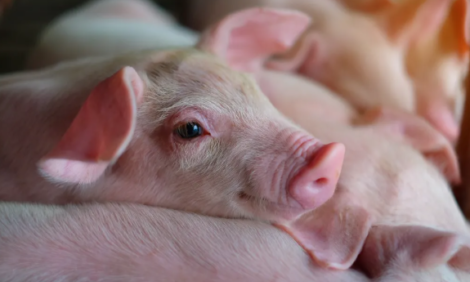



US Pork Outlook Report - August 2001
By U.S.D.A., Economic Research Service - This article is an extract from the August 2001: Livestock, Dairy and Poultry Situation and Outlook Report, highlighting Pork Industry data. The reports indicates US pork exports are surging ahead on the back of Japanese demand. At the same time imports from both Canada and Denmark declined.| Producers’ Returns Up in First-Half |

|
However, strong broiler and pork exports reduced domestic supplies below a year ago.
| Exports Surge, Imports weaken |
U.S. Pork Exports Surge
The United States is expected to export more than 1,543 million pounds of pork this year, and slightly less in 2002 (1,415 million). The expected record exports for this year has been driven by larger than expected shipments to Japan. U.S. pork exports in the first half of 2001 ran 34 percent ahead of last year, primarily due to very large shipments of fresh and frozen pork cuts to Japan.
High beef U.S. prices, the foot and mouth disease (FMD) outbreak in Europe, and lower domestic hog slaughter caused Japanese importers contracted for large quantities of pork from the United States, Denmark, and Canada. Imports were so large that the Safeguard threshold of 183,850 metric tons (product-weight equivalent) was exceeded in June.
The Safeguard is a WTO-sanctioned means of protecting Japanese pork producers from import surges. On August 1, the Japanese Government imposed the Safeguard, which increases the minimum price of all pork cuts imported into Japan by 24.6 percent. The Safeguard will be in place until March 31, 2002, the end of the Japanese fiscal year.
U.S. Pork Imports Weaker
The United States is expected to import 916 million pounds of pork this year and 960 million in 2002. U.S. pork imports were 12 percent lower than a year ago during January-June.
Imports from both Canada and Denmark declined as both countries increased exports to Japan. The extent to which Japanese pork imports slow down as a result of the Safeguard will strongly influence U.S. pork imports in the second half of 2001.
Live Hog Imports Expected To Be Record Large
Live hog imports are forecast at 5.3 million head for both 2001 and 2002, compared with 4.36 million head in 2000. The rapid evolution of both a feeder pig export sector in Canada and a hog finishing sector in Corn Belt States traditionally given to farrow-to-finish operations, has been the primary factor in increased import forecasts.
Continuing expectations for low feed prices and slow expansion of Canadian finishing operations are also contributing to the increased forecast. First-half 2001 live hog imports from Canada were over 1.4 million head, 57 percent of which were feeder animals.
Hog Slaughter Lagging Below Expectations
Hog slaughter in the third quarter has lagged behind expectations based on the December-February pig crop. In addition, dressed weights are also below expectations due to the prolonged heat wave in the central part of the Nation.
Due to lower than expected production, prices are running higher than previously forecast. Hog prices in July and August will likely average about $53 per cwt and with breakeven costs in the mid- to high-$30s, producer returns are very favorable.
More information including figures and graphs is avaiable in the full 25 page report, see below for details.
Links
For more information view the full Livestock, Dairy and Poultry Situation and Outlook (pdf)Source: Livestock, Dairy and Poultry Situation and Outlook - U.S. Department of Agriculture, Economic Research Service - August 29, 2001








